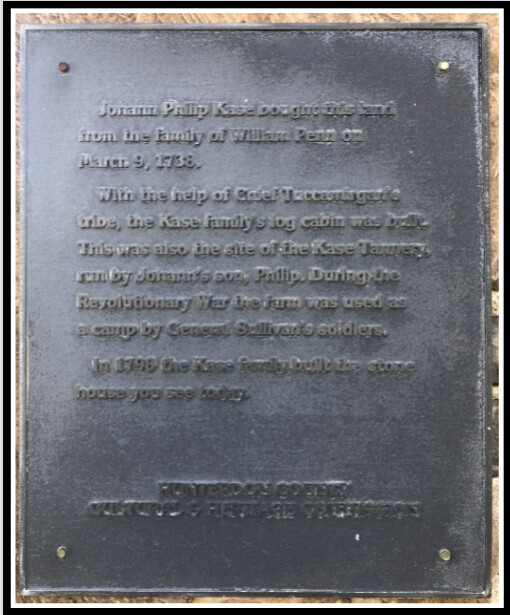In the September 1891 edition of The Jerseyman, a locally published historical magazine, author Elias Voseller jotted down the below retrospect of the family of Johan Philip Kase (later Anglicized to Case). We thought you might enjoy reading a few excerpts from almost 130 years ago about the family that lived at what is now HLT’s headquarters.
One of the first settlers in the vicinity of Flemington, New Jersey, was John Philip Kase. He came from Germany by the way of New York. His wife’s name was Rachel Houser. . .
On one occasion Rachel went out in the woods to hunt her cow. She lost her way and after wandering around for several hours she saw smoke rising above the tree tops. Going in that direction she came to a house and after knocking at the door, found it to be her own dwelling.
About one hundred yards further up this brook stood the wigwam of the chief of a small tribe whose village was located still further up the stream on lands now owned by Peter Barker and Geo. Ellicott, near the farm of David Chamberlain. There was a very fine spring a little north of their village and it still flows strong and clear. These grounds were used for the first camp meetings held hereabouts when Rev. John Atkinson was seeking to establish a Methodist Church in Flemington.
A strong friendship sprang up between Mr. Kase and this Chief. The Chief called him his blue brother, the significance of which is not clear. They smoked the pipe of peace together and the bowl of that pipe which the chief gave to Mr. Kase, is now in the possession of John B. Case of Flemington, his great-grandson.
The chief had no children and his (wife) used frequently to come to Mr. Kase’s and borrow some of their children and take them to her wigwam and keep them all day. . .
When the Chief died Mr. Kase had him buried on his land. His was the first grave in what was afterward known as the Kase burying ground. It is still enclosed and contains forty-seven graves. It lies on the south side of Bonnell St., above the Academy and joins the north east corner of Captain Shields’ farm. The burial was attended with great ceremony, the grave dug very deep, and the Chief placed in a sitting position facing the east. His war and hunting implements were buried with him. He was buried at night and great fires were kept burning during the ceremonies, which consisted of funeral dances, and the chanting of dismal dirges, which lasted till morning.
There’s more to this story, and it is quite interesting, but we are saving it for another day. We’re hoping to research and learn more about what the article claims. Stay tuned.






